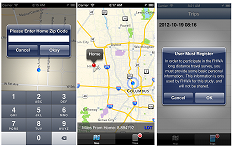
P.I.:
Lei Zhang
University of Maryland
Year:
2014
Project Report:
NTC 2014 Information Form_Principal Investigator_Lei Zhang_September 2014.pdf
NTC 2015 Information Form_Principal Investigator_Lei Zhang_March 2015.pdf
Subject Area:
Advanced Research
Description:
The objective of this proposed research project is to develop a prototype microsimulation-based national and inter-regional passenger travel demand model for High Speed Rail demand forecasting and other national-level travel analysis. The proposed research represents the first attempt to develop a microsimulation-based national long-distance travel demand for high speed rail and national travel analysis. All major behavioral dimensions of long-distance travel will be considered, except for route choice and network loading that require significant new network data collection/coding efforts and cannot be achieved with the limited budgeted of this project. Compare to the traditional four-step approach, microsimulation-based techniques offer several advantages: (1) It is easier to consider tours, multi-day and multi-stop trips, and intermodal access/egress transfers that are important for long-distance travel modeling; (2) Households and persons are the basic units of analysis, which enables detailed behavioral representations and interactions; and (3) It provides a rich framework in which travel is analyzed as a multi-day, monthly, quarterly, or yearly pattern of behavior, derived from activity participation. There are also significant differences between long-distance trips considered in the proposed microsimulation-based model and trips on a daily/weekly basis represented in metropolitan/state-level tour/activity-based models developed in previous research. For instance, it is often the case that households first choose travel modes for long-distance vacation trips based on travel budget before selecting destinations. Categorization of trip purposes is also different for long-distance trips. Cost of travel for long-distance trips is not just travel disutility, but also includes lodging, food, etc., and the same with the total travel time for long-distance which usually covers not only in-vehicle travel time but also the ingress/egress time, transfer time, and lodge time. The much lower frequency of long-distance travel may also imply a different decision-making process. This research is exploratory in nature, and it is hoped that the final product, the prototype microsimulation-based model, will be able to predict high speed rail travel demand among various OD pairs at the national level.
Top